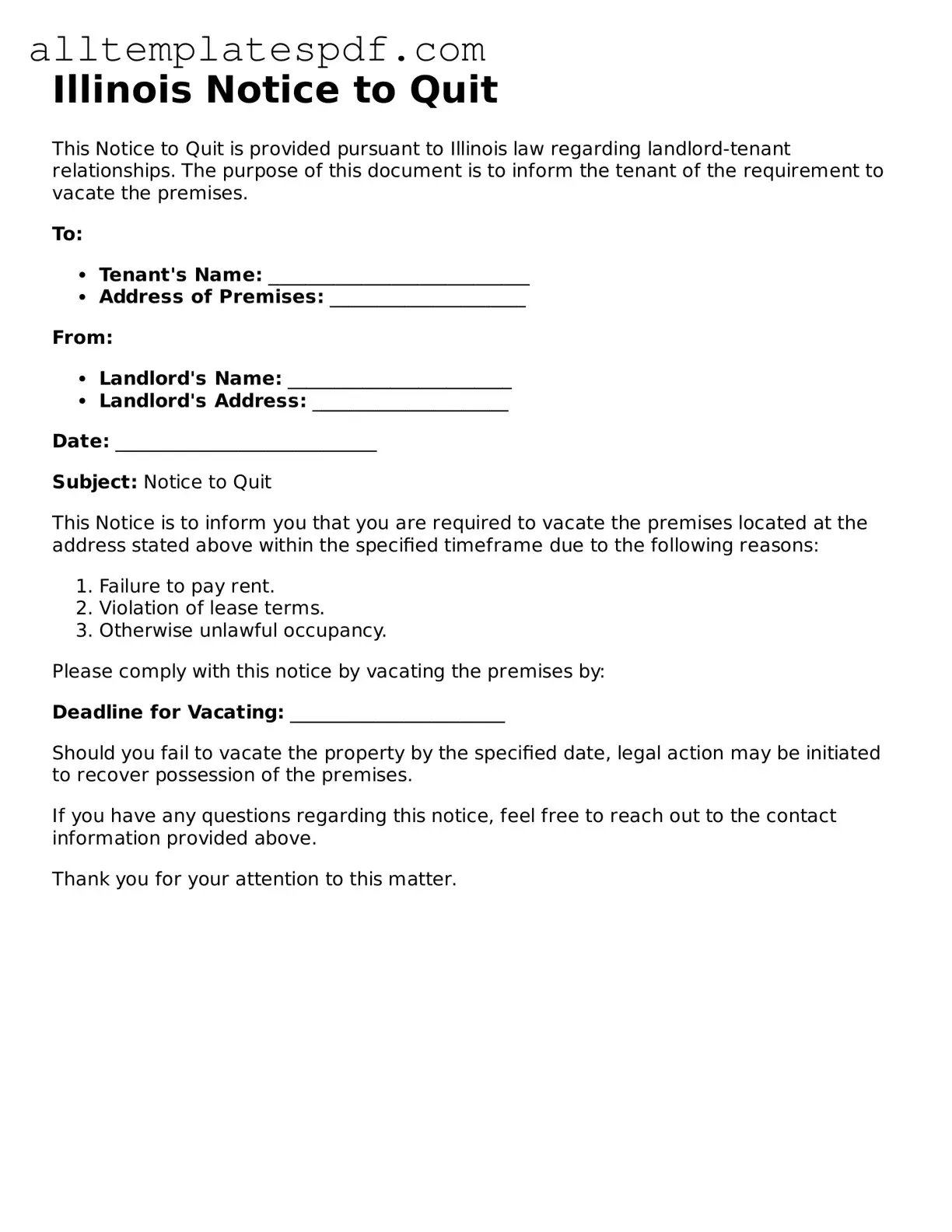Completing the Illinois Notice to Quit form can be a straightforward process, but several common mistakes often lead to complications. One significant error is failing to provide the correct address of the rental property. The form must clearly state the location where the tenant resides. Omitting this detail can result in delays and confusion, as the notice may not be properly served.
Another frequent mistake involves incorrect dates. The Notice to Quit requires specific dates to indicate when the tenant must vacate the premises. If these dates are inaccurately filled out, it may render the notice invalid. For instance, using a date that has already passed can create legal challenges, complicating the eviction process.
Many individuals also overlook the importance of specifying the reason for the eviction. The Illinois Notice to Quit form should clearly outline the grounds for termination of tenancy. Whether it’s due to non-payment of rent or lease violations, a vague or missing explanation can weaken the case if it goes to court.
Additionally, some people neglect to sign the form. A signature is crucial as it signifies that the landlord has officially initiated the eviction process. Without a signature, the notice may be considered incomplete, and the tenant may not recognize the seriousness of the situation.
Lastly, individuals often fail to provide adequate copies of the notice. It’s essential to keep a copy for personal records and to serve a copy to the tenant. Not doing so can lead to disputes about whether the notice was delivered. Proper documentation is vital in any legal proceeding, and maintaining clear records can help avoid future complications.
